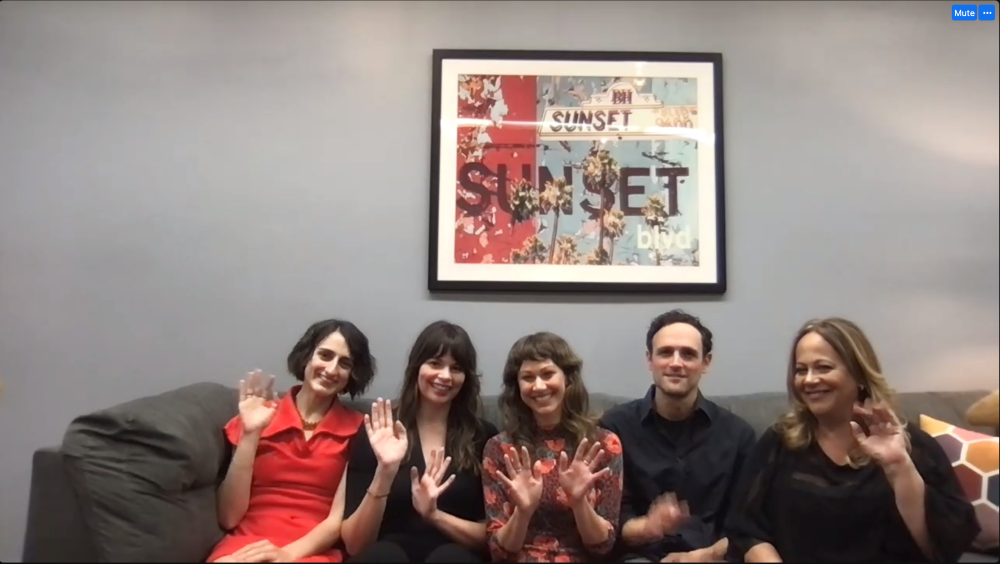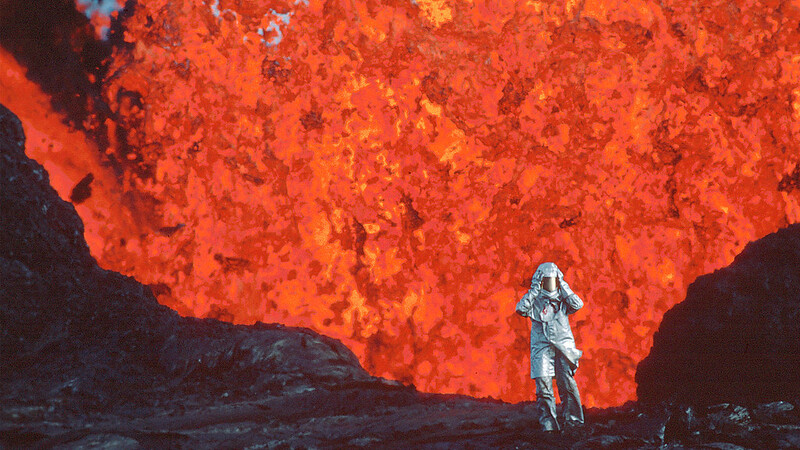By Vanessa Zimmer
Despite Fire of Love’s awe-inspiring images of fire spewing and spattering from the mouths of volcanoes — and then oozing and pulsating downward like a blazing snake — what endures after this film ends are the beaming faces of Katia and Maurice Krafft.
Slight Katia and curly-haired Maurice became media darlings for their on-site observations and documentation of volcanic eruptions in the 1970s and ’80s. She a geochemist, he a geologist, they turned to the Earth because they were “disappointed in humanity,” said Maurice. But they also absolutely loved chasing and studying volcanoes; they could not imagine doing anything else.
Their footage, still photos, media tours, and books (19 of them!) contributed to a greater understanding of the science and danger of volcanoes. By filming the fury and devastation of eruptions, the Kraffts aimed to influence better warning systems and government evacuation policies.

In a Q&A following the premiere of Fire of Love Thursday night, director Sara Dosa said her crew stumbled onto the work of the Kraffts while working on another film project. They marveled at the absolute treasure trove of footage within the Krafft archives. But the couple’s love story, their playfulness and devotion to each other, sealed the decision to tell the volcanologists’ story. “They were passionate about volcanoes, but also about life itself,” said Dosa.
The Kraffts would walk within feet of the glowing lava flows and peer down into the maw of a crater. “I want to get closer, right into the belly of the volcano,” said Maurice. “It will kill me one day, but that does not bother me at all.”
And in fact, that is what happened. In an effort to unravel the unpredictability of killer “gray volcanoes” like Mount St. Helens, which emit dense clouds of burning ash, the French couple, both just in their 40s, lost their lives. They perished in a pyroclastic surge, a sudden, billowing cloud belched from Japan’s Mount Unzen in 1991, as they and companions observed from a not-distant-enough green hillside.

